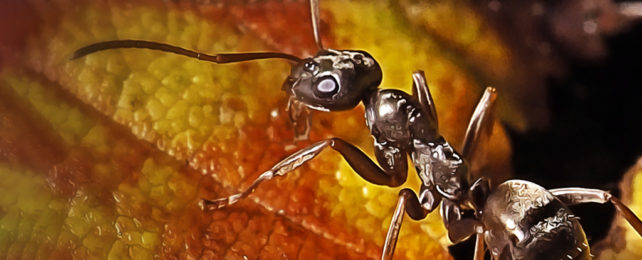One day, ants might help save lives by acting as inexpensive bio-detectors. Their powerful sense of smell allows them to distinguish subtle molecular differences in biological samples that we would otherwise require expensive equipment to detect.
A new proof-of-concept study just demonstrated this skill could be harnessed to detect cancers in urine samples, at least from lab mice.
"Ants show the potential to become a fast, efficient, inexpensive and non-invasive tool for detection of human tumors," Sorbonne University ethologist Baptiste Piqueret and colleagues write in their paper.
Cancer remains the leading cause of death worldwide, with more than 19 million cases in 2020. The earlier cancer is detected, the higher the chances patients can recover, but current detection methods are invasive or expensive, which may deter patients from undergoing screenings as early as they could otherwise be.
So researchers turned to animals for help, from mice to dogs, to see if this process could be more accessible. Piqueret and the team have now put ants to the test, too.
They conditioned 35 silky ants (Formica fusca) to associate healthy mouse urine with a sugar-water reward and another 35 to associate the smell of urine from mice carrying human cancer tumors.
It took only three training sessions for the ants to discriminate between odors. These ants are known for their fast learning and memory retention; they can be tested nine times without a reward before their responses start to fade.
In their previous study, the researchers found ants can distinguish between cancerous and healthy cell samples and different types of cancer cells.
Once trained, the ants spent around 20 percent more time near the target odor than others, looking for that sugary reward and incidentally providing a clear and accurate signal of the presence or absence of breast cancer in the mouse urine.
This was despite the fact that the cancer biomarkers from the grafted human tumor were potentially altered while passing through the mouse's body and mixed in with other scents within the mouse urine.
Chemical analysis confirmed that the smelly volatile molecules in the urine of the mice with cancer are indeed different from those without. What's more, the larger the cancer tumor, the more different the odors are.
Yet the ants showed no difference in their ability to detect the presence of small tumors compared to large tumors in the mice; they could sniff out large and small tumors from cancer-free controls just the same.
While these results are promising, there's still more work to do before any potential use in clinical settings.
"A limitation of our study is that the odors we used may not represent the wide diversity of cancer odors that exists in nature," the team writes.
"In a real-life situation, confounding factors such as age, diet, condition, or stress may contribute to the inter-individual variability of individual body odors. Our method needs further validations using different tumors/cancer types and, most crucially, samples of direct human origins, before being considered suitable as a routine test for cancer screening."
This research was published in the Proceedings of the Royal Society B: Biological Sciences.
